Your Cart is Empty
Free Shipping for orders over $49 in Australia, $199 IN NEW ZEALAND/USA/CANADA AND $249 REST OF THE WORLD
Free Shipping for orders over $49 in Australia, $199 IN NEW ZEALAND/USA/CANADA AND $249 REST OF THE WORLD
Add description, images, menus and links to your mega menu
A column with no settings can be used as a spacer
Link to your collections, sales and even external links
Add up to five columns
Add description, images, menus and links to your mega menu
A column with no settings can be used as a spacer
Link to your collections, sales and even external links
Add up to five columns
The Wreck of the Royal Nanhai
by Linda Heaphy May 10, 2017
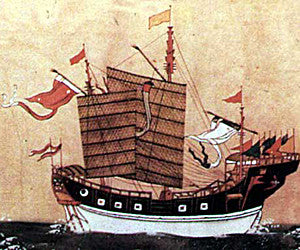
The Royal Nanhai
At a time when England was occupied with the War of the Roses and Christopher Columbus was planning his trip of discovery to the New World, a Siamese junk plied the waters off the east coast of the Malaysian peninsula, transporting over 20,000 pieces of green and brown glazed Celadon ceramic to the southern port of Tuban in Eastern Java. The ill-fated vessel came into trouble on route, most likely during one of the violent monsoonal storms common to the South China Sea. Her unusual length and extremely heavy load may have contributed to her difficulties, causing her to spring a leak and sink quickly to the seabed. Some 550 years later in 1992, the ship was rediscovered by a dedicated team of marine salvage experts headed by renowned Sten Sjöstrand and renamed the Royal Nanhai in honour of the 15th century Chinese name for the South China Sea, Nanhai.


Image and drawing of the royal elephant seal found in the secret compartment.
The shipwreck provided researchers with invaluable new archeological data and a perfect snapshot of ancient maritime trade at the time when the ship was lost. Analysis indicated that, of the 20,973 pieces of pottery on board, most were celadon-ware from the famous Sisatchanali kilns of northern Thailand. Samantha black-glazed storage jars were also found, a number of which contained the remains of fish bones from a salt-water mackerel still considered a delicacy in Southeast Asia. However, perhaps the most important find was that of a hidden compartment located between the lower decking and keel, containing a cache of artifacts including seven pieces of blue and white pottery from China, a finely detailed bronze seal thought to be the personal property of the ruler of Majapahit, a lacquer-ware box and an ivory sword handle. The presence of the seal suggests that this secret collection was intended as a royal gift to an unknown ally. It is the presence of the blue and white porcelain that has helped to date the wreck and its contents most accurately, suggesting a date for the wreck of mid-15th century, supported by a carbon-14 date corresponding to AD.1400 +/- 70-years.
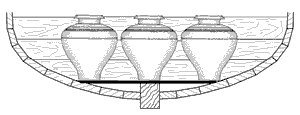
The location of the secret compartment under the lower deck;
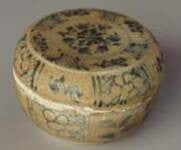
The Vietnamese lacquerware box secreted inside the compartment
Unfortunately, over eighty percent of the pottery pieces recovered from the wreck of the Royal Nanhai were severely deteriorated, partly due to their long submersion period. Of the recoverable twenty percent, 2,619 pieces were donated to the National Museum in Kuala Lumpur and a further representative selection was given to the Pekan Museum in Pahang State and the Malacca Museum Corporation. Remaining pieces were made available for sale, allowing some of the finest 15th century celadon wares ever seen to become available to private collectors and institutions alike. Their unquestionable authenticity and precise dating provide a level of provenance that is rarely seen today in the Southeast Asian antique pottery market, and several international museums, including the Victoria & Albert Museum in London, now display pieces from the Royal Nanhai as reference material.
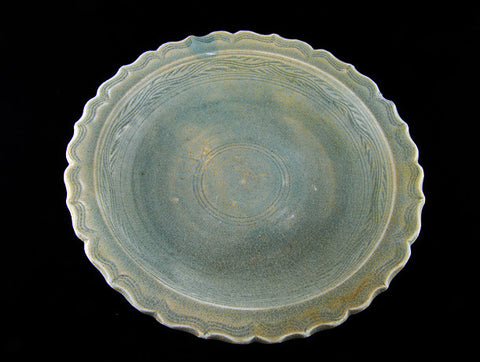
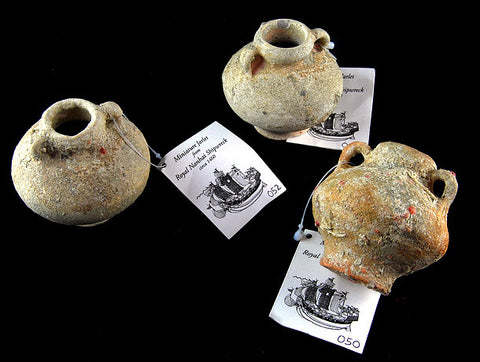
Several pieces from the Royal Nanhai, consisting of plates and fish oil jarlets, were made available to us to sell here at Kashgar, and were snapped up very quickly by Australian collectors. Photo credit: Kashgar.
Leave a comment
Comments will be approved before showing up.
Also in History

What in the World About Mao: Transformation of Mao Zedong from Tyrant to Pop Icon is Nearly Complete
by Linda Heaphy May 10, 2017
Read More Articles
About the Author
- Linda has a Honours degree in Marine Biology and a PhD in Ecology from the University of NSW, Australia. She has travelled extensively and is a passionate writer on subjects as diverse as the role played by women throughout history, tribal communities and their customs, symbology and ethnology, talismans and their history. Occasionally she also writes about her travel experiences, her new life on a 25 acres in the Northern Rivers region of northern Australia and her black miniature poodle Phoenix. She is currently writing her first book on talismans.
About Us
-
The Kashgar Philosophy

Kashgar began through a love of travel.
In 1989 my father Bernard packed in his house painting business and set off for two years on a backpacking trek to the remotest corners of the world. When he finally arrived in the oasis city of Kashgar, China, he was so impressed with its history that he decided to start a new life collecting and selling exotic goods from all over the world. For 2000 years the legendary city of Kashgar was a melting pot of ideas and a key trading post on the historic Silk Road. It was this unique combination of philosophy and trade that my father wanted to recreate at home.
Starting in markets in 1991, he opened his first store in the Sydney suburb of Newtown in 1994. I gave up my own career as a government scientist to join him in 2000 and soon convinced my partner Ian to join us in what was to become the Family Business.
Today our version of Kashgar stocks a hugely diverse range of furniture, rugs, textiles, antiques, handicrafts and jewellery sourced from over twenty different countries including India, Nepal, Tibet, China, Thailand, Burma, Laos, the Philippines, Vietnam, Mexico, Peru, Turkey, Palestine, Syria, Afghanistan and Turkmenistan. Our collection includes contemporary and tribal silver and gold jewellery, a unique range of headhunting curios, antique Buddhist relics and a collection of one-off necklaces, earrings and bracelets that I design and create myself using the beads and jewellery making techniques of ethnic minorities from around the globe.
Kashgar is a philosophy as well as a store. We are committed to supporting traditional artisans and small village communities by selling authentic handcrafted goods which are personally collected by us. By supporting traditional methods of design and production we hope to encourage local cottage industries which have a low impact on the environment and help ethnic minorities maintain their self-sufficiency into the 21st Century. We are particularly committed to assisting women around the world and to this end have worked with several organisations including the Hua Bin Women's Union of Vietnam, the East Timorese Women's Association and Tikondane in Zambia. Time honoured means of craftsmanship and traditional ways of life are disappearing as people all over the world give up their identity in favour of jeans and T-shirts. We see our trade as a means of staving off the inevitable encroachment of the 21st century, assisting communities to decide for themselves which parts of the western world they wish to incorporate (medicine, education) and which they wish to reject (prostitution, drug production, begging and servitude to warlords). We encourage our customers to think of the handicrafts and artifacts they buy from us as an investment: a piece of history and a way of life that may soon be gone forever.
Kashgar has recently closed its retail outlet and gone completely online.
In the past our pieces appeared in many movies including The Hobbit, Mission Impossible 2, Queen of the Damned, Scooby Doo, Moulin Rouge and Wolverine, and in many televisions series, as well as in plays, commercials and exhibitions. We've found special pieces for individual customers as well as for film sets, event management companies, hotels, businesses, consulates and embassies. The uniqueness of our stock means that we are also very appealing to interior and fashion designers with a taste for the exotic.
There is something for everyone at Kashgar - collectors, the curious, those looking for a special present or for something unique to adorn the home. Most of our items are one-off specialties; other pieces we only stock in small quantities so as to continuously offer a wide and ever-changing range of interesting products. We are also packed with ideas for decorating home and work premises that will challenge your established concepts of design and storage.

Please enjoy - Linda Heaphy
Become a Kashgar nomad and join our mailing list...
Sign up to get the latest on sales, new releases and more …




